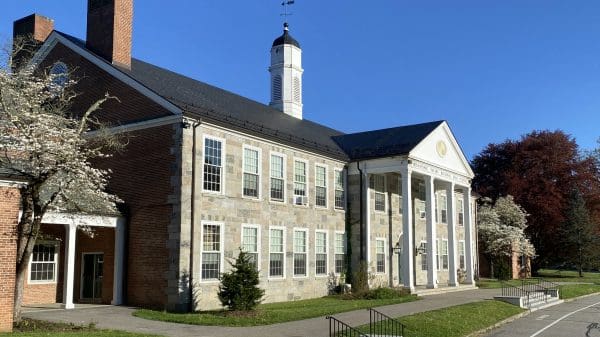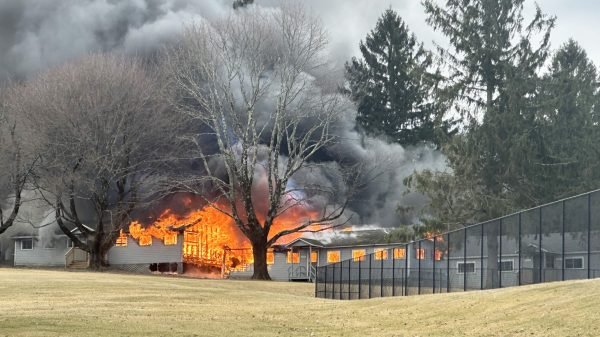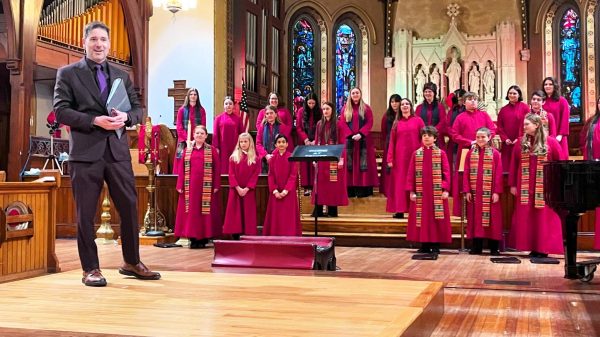KENT, Conn. — The Emery Park Subcommittee recently met with Candide Valadares of Candide Contractors to discuss the feasibility of creating a natural swimming pool at Emery Park.

Valadares, who has built natural pools throughout Fairfield County, said Thursday, Nov. 14, that as interest in the preservation of wetlands has grown, more and more customers have requested natural cement pools “that are healthy and sustainable.”
The pools use natural filtration instead of chlorination. He said refurbishing the old pool at Emery Park would not be money wisely spent and that it should be rebuilt with a new concrete structure.
“When I looked at the pool, I saw quite a bit of deterioration,” he reported. “I don’t see it being restored; it would only last a few years,” he said. “I would start from the ground up with a new swimming pool.”
Water flowing into the new pool from the surrounding landscape would be filtered as it entered the pool and then “rejuvenated” and recirculated. “You could drink it, if you wanted,” he said.
He estimated that construction of the pool and the filtration system would cost $1,734,517.
The existing pool structure is large, 140 feet by 70 feet, and ranges in depth from about 2.5 feet to eight to 10 feet.
Member Miranda Lovato noted that the temperature is often cold. Subcommittee members also noted that the water in the pool is often cold and wondered about reducing its depth to warm it more.
“We live in Connecticut, so we can expect some cold water, especially flowing down from the hillside,” said Valadares.
In answer to issue of size, he said making it smaller could trigger regulatory reviews.
Subcommittee Chairman John Grant said that in 2004, the last time the issue was discussed, Park and Recreation was told a design change would require approval from the Department of Public Health. He added that designs for natural filtration did not exist at that time.
But Valadares cautioned, “You can assume any time you change the footprint for a body of water, there is always controversy. Changes in size are possible, but you have to see what the regulations are.”
As to warmth, he said lowering the depth of the pool would warm the water but would also increase nutrients in the water. “We can filtrate for that,” he said.
Jets of compressed air at the pool’s bottom would aerate the water to help keep down any plant growth and would mix warmer water from the shallower end with colder water where it is deep. “But it is a big body of water to move,” he observed, “and the shallow end will always be the warmest.”
Lovato remembered that when the pool was previously in use, people tended not to use the deepest portion.
Members were also “disappointed” that the design did not include a sandy portion at one end where children could play and wade into the water. Valadares did not recommend the feature because sand would be tracked into the pool and settle on the bottom. He had designed a ramp at one side that would allow handicap access.
He described his design as “a plain, basic natural pond—a shell, a plain body of water, some air defused, no skimmer, no suction, nothing mechanical that will break down.”
He said other than weekly vacuuming to remove debris and a yearly flushing, it should be low maintenance and predicted that a properly prepared shell could last “almost like a lifetime.”
An added benefit would be that the pool does not have to be drained in the winter and could be used for winter skating.
After the presentation, committee members discussed the design.
Lovato said reducing the size and having warmer water would be an inducement for more people to swim. She also questioned the town’s ability to staff such a large pool with lifeguards.
The group decided it would be wise to get other proposals and estimates, including one for a chlorinated pool.
Lovato said giving the public information on the cost of a chlorinated pool and whether it is feasible build one would be “a useful tool” in presenting the proposal to the public.
“This is a big chunk of money, more than we initially thought,” she observed. “I think it will be a hard sell.”
Park and Recreation Director Matt Busse reported that Town Treasurer Barbara Herbst determined that the $100,000 in ARPA money originally budgeted for Emery Park and then redesignated for a splash pad at Kent Commons can, indeed, be moved back to the Emery Park pool fund.
The decision to make that move requires only concurrence between himself, the first selectman, and the treasurer but he wanted the support of the subcommittee and the full Park and Recreation board. The subcommittee gave him its imprimatur.
Fundraising was discussed and Busse said that any fundraising for the pool has to originate outside of town government. Donations could be directed to one person not serving on a town board or commission, or an organization, and then gifted to the town.
Grants are another possibility for offsetting the expense.
In other business, Busse said that he has partnered with All Trails, an international guide to hiking experiences.
“It will assist with promotion for our trail and collect data on hikers,” he said.
The Emery Park Blue Trail has already had 243 views on All Trails and actual visitation is up 42.9 percent over the first half of 2024.
Busse and volunteers have been clearing trails at Emery Park since spring and he is continuing to develop routes while being mindful of the wildlife living there.
“I am making sure it is not segmented so animals are isolated,” he said. He hopes to complete his design by the end of the year.





































Bruce Adams
November 21, 2024 at 3:44 pm
Please don’t reopen the “cement pond” at Emery Park. It had it’s day and is not suitable for today’s world. I wonder how many present P&R members were around when it was Kent’s swimming facility. It was well known for water issues, snakes,an occasioal snapping turtle and frogs. In it’s heyday kids would bike and walk to the pool on dangerous Rt 341.With the speed of drivers today, I think reopening there is inviting trouble. I would advocate for a regulation pool in Town in a safe, sunny location.
Joe Baxer
November 25, 2024 at 10:40 am
I have spend many delightful afternoons swimming at Emery Park over the years. I have watched as young folks truly seemed to enjoy themselves, splashing in the sunshine. A safe welcoming park pool would be a plus for our community. A safe bike and walking path from the new sidewalks being build certainly should be feasible. I can imagine that grants along with town funding would be purposeful for a community where healthy bodies enable healthy minds enable engaged citizens. I applaud our Emery Park Sub Committee for exploring options … not only for the moment but for future generations.